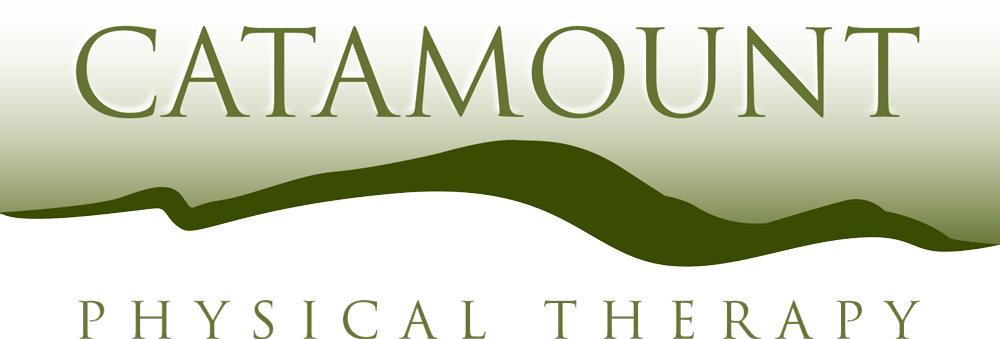
Back Pain and Sciatica
Millions of Americans are adversely impacted by back pain each year. Studies show that, at one point or another, approximately 80% of the U.S. population will be affected.
While there are a lot of treatment options available, many of these only address the symptoms and don’t target the actual cause of your pain or handle it for the long term.
The three main causes of low back pain and sciatica are:
- Herniated Discs
- Arthiritis
- Pelvis issues
Without identifying the correct cause of your pain there is no way to develop the proper treatment plan.
Our physical therapists will find the actual cause of your back pain. The goal of effectively resolving your low back pain or sciatica includes…
- Identify the true cause
- Create a unique plan for your specific condition
- Relieve your pain
- Restore your normal motion, flexibility, mobility
- Strengthen the supporting muscle
- Return to your normal activities
Here at Catamount Physical Therapy our specialty is Back and Neck Pain. Our therapists are very experienced and have the knowledge and skills to provide a number of different ways to reach your goal of getting back to your normal self again.
On your first visit...
- It begins with a full interview and physical therapy examination.
- Afterwards the therapist will explain to you in English, not medical jargon, where the cause of your problem is coming from.
- YOUR GOALS and YOUR EXPECTATIONS will be discussed and agreed upon.
- Considering those goals, you will learn what successful treatment looks like.
- You and the therapist will discuss this plan and work together to resolve your pain and get you back to your normal self again.
Common conditions we treat:
- Back Pain
- Lumbar sprains/strains
- Herniated or Bulging Disc (HNP)
- Degenerative Disc Disease (DDD)
- Spinal Stenosis
- Sciatica and leg pain
- Facet pain
- Spondylosis
- Spondylolisthesis
- Arthritis
- Osteoporosis
- Compression fractures
- Post surgical rehabilitation
McKenzie Method
What is the McKenzie Method?
Also known as Mechanical Diagnosis and Therapy (MDT), the McKenzie Method is a philosophy of active patient involvement and education that is trusted and used by practitioners and patients all over the world for back, neck and extremity problems. An evidence based approach, the key distinction of MDT is its initial assessment component -- a safe and reliable means to accurately reach a diagnosis and only then make the appropriate treatment plan. Certified McKenzie clinicians have valid indicators to know right away whether -- and uniquely how -- the method will work for each patient.
The Right Road to Restore Function
For successful treatment, one must first be effectively evaluated. Pain is a symptom -- not a diagnosis. Assessment is the first step!
The evidence has shown that the initial McKenzie assessment procedures preformed by competent MDT clinicians are as reliable as costly diagnostic imaging (i.e., X-rays, MRIs)* to determine the source of the problem and quickly identify those who will or will not respond to the treatment principles of MDT.
Through a series of repeated movements and positions, certified MDT practitioners assess two things as a result of these movements -- symptomatic and mechanical response. Patterns of response can be determined for what makes symptoms better or worse. Patients are classified accordingly and an effective set of exercises is established based on a "directional preference." Typically this is achieved in only 3 -5 visits!
Three Steps to Success
STEP 1: Assessment
MDT provides a safe, logical guide to the most optimal treatment strategy for a specific patient. Unique to the McKenzie Method, the process begins with a thorough history and testing of repteated movements to identify distinct patterns of pain responses that are: objective, reproducible, and reliable.
The most common and meaningful pattern of pain response is Centralization: when pain that has spread from the center of the back or neck down the leg or arm can reverse returning to the center of the back or neck, and eventually cease. Whether the patient's pain is acute or chronic, if Centralization occurs through this logical step-by-step assessment process, treatment is the most successful and lasting.
STEP 2: Treatment
The basis of the McKenzie system is the patient's own ability for movements and forces to abolish the pain and restore function. A series of individualized exercises are prescribed subsequent to the patient's responses during the assessment process and -- most critically -- are based on the identified Directional Preference of movements that will centralize or abolish pain (i.e., extension or flexion, right or left lateral movement, etc.)
Patients who do respond favorably with MDT can successfully treat themselves--and minimize the number of visits to the clinic--when provided the necessary knowledge and tools putting him or her in control of their treatment safely and effectively.
STEP 3: Prevention
Patients who stick to the prescribed treatment protocols are less likely to have persistent problems. Thus, by learning how to self-treat the current problem, patients gain hands-on knowledge on how to minimize the risk of recurrence and how to quickly manage themselves if symptoms do occur.
Need a McKenzie lumbar or cervical roll? Or McKenzie's self-help books, Treat Your Own Back or Treat Your Own Neck? Give us a call.
Creating Independence
McKenzie MDT is a proven methodology:
- Backed by years of research, evidence, and practice
- Low cost, fast and effective, even for chronic pain
- Non-invasive - no needles, no scalpel
- Self-directed - we work with you and teach you
- Be in control of your own symptom management
- Gain life-long pain management and preventive skills
Proven goals of McKenzie MDT are to:
Promote the body's potential to heal itself without medication, heat, cold, ultrasound, needles, surgery or endless visits to the clinic.
